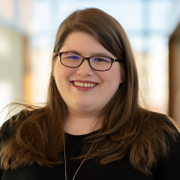- Level Professional
- Duration 13 hours
- Course by University of Colorado System
-
Offered by

About
This course teaches you the fundamentals of clinical natural language processing (NLP). In this course you will learn the basic linguistic principals underlying NLP, as well as how to write regular expressions and handle text data in R. You will also learn practical techniques for text processing to be able to extract information from clinical notes. Finally, you will have a chance to put your skills to the test with a real-world practical application where you develop text processing algorithms to identify diabetic complications from clinical notes. You will complete this work using a free, online computational environment for data science hosted by our Industry Partner Google Cloud.Modules
Welcome to Clinical Natural Language Processing
1
Videos
- Welcome to Clinical Natural Language Processing
1
Readings
- Get help and meet other learners in this course. Join your discussion forums!
Getting Started
3
Readings
- Introduction to Specialization Instructors
- Course Policies
- Accessing Course Data and Technology Platform
Introduction to Clinical Natural Language Processing
1
Videos
- Introduction to Clinical Natural Language Processing
NLP Fundamentals
5
Videos
- NLP Fundamentals: Linguistics
- NLP Fundamentals: Morphology & Lexicography
- NLP Fundamentals: Syntax
- NLP Fundamentals: Sematics & Pragmatics
- NLP Fundamentals: Wrap Up
Week 1 Assessment
1
Assignment
- Week 1 Assessment
Introduction to Regular Expressions
1
Videos
- Introduction to Regular Expressions
Text Processing in the Tidyverse
1
Videos
- Text Processing in the Tidyverse
Tips and Tricks for Text Processing
1
Videos
- Tips and Tricks for Text Processing
Programming Examples and Exercises
1
Assignment
- Regular Expressions and Text Processing in R - Try it Out For Yourself Exercises
1
Readings
- Regular Expressions and Text Processing in R
Week 2 Assessment
1
Assignment
- Week 2 Assessment
1
Readings
- Note about the Assessment
Techniques: Note Sections
1
Videos
- Techniques: Note Sections
Clinical Note Types
3
Videos
- Clinical Note Types: History and Physical Notes
- Clinical Note Types: Discharge Summaries
- Clinical Note Types: Radiology Reports
Programming Examples and Exercises
1
Assignment
- Note Section Techniques - Try It Out For Yourself Excercises
1
Readings
- Note Section Techniques
Week 3 Assessment
1
Assignment
- Week 3 Assessment
1
Readings
- Note about the Assessment
Techniques: Keyword Windows
1
Videos
- Techniques: Keyword Windows
Programming Examples and Exercises
1
Assignment
- Keyword Windows Techniques - Try it Out For Yourself Answers
1
Readings
- Keyword Windows Techniques
Week 4 Assessment
1
Assignment
- Week 4 Assessment
1
Readings
- Note about the Assessment
Welcome to Practical Applications!
1
Videos
- Welcome to Practical Applications!
Practical Application Project: Identifying Patients with Diabetic Complications
1
Peer Review
- Practical Application Project: Identifying Patients with Diabetic Complications
Auto Summary
"Clinical Natural Language Processing" is a highly specialized course offered by Coursera, designed for professionals in the Data Science and AI domain. This course delves into the essential principles of clinical NLP, providing a strong foundation in basic linguistic concepts and practical skills for text data management using R. Learners will master the creation of regular expressions and techniques for processing clinical text data to extract valuable information from clinical notes. A standout feature of this course is the hands-on project where participants develop text processing algorithms to identify diabetic complications from clinical notes, leveraging Google's free online computational environment for data science. The course spans approximately 780 minutes and offers two subscription tiers: Starter and Professional, catering to learners at a professional level. This course is ideal for data scientists, healthcare professionals, and AI enthusiasts aiming to enhance their expertise in clinical NLP and apply it to real-world healthcare scenarios.

Laura K. Wiley, PhD

